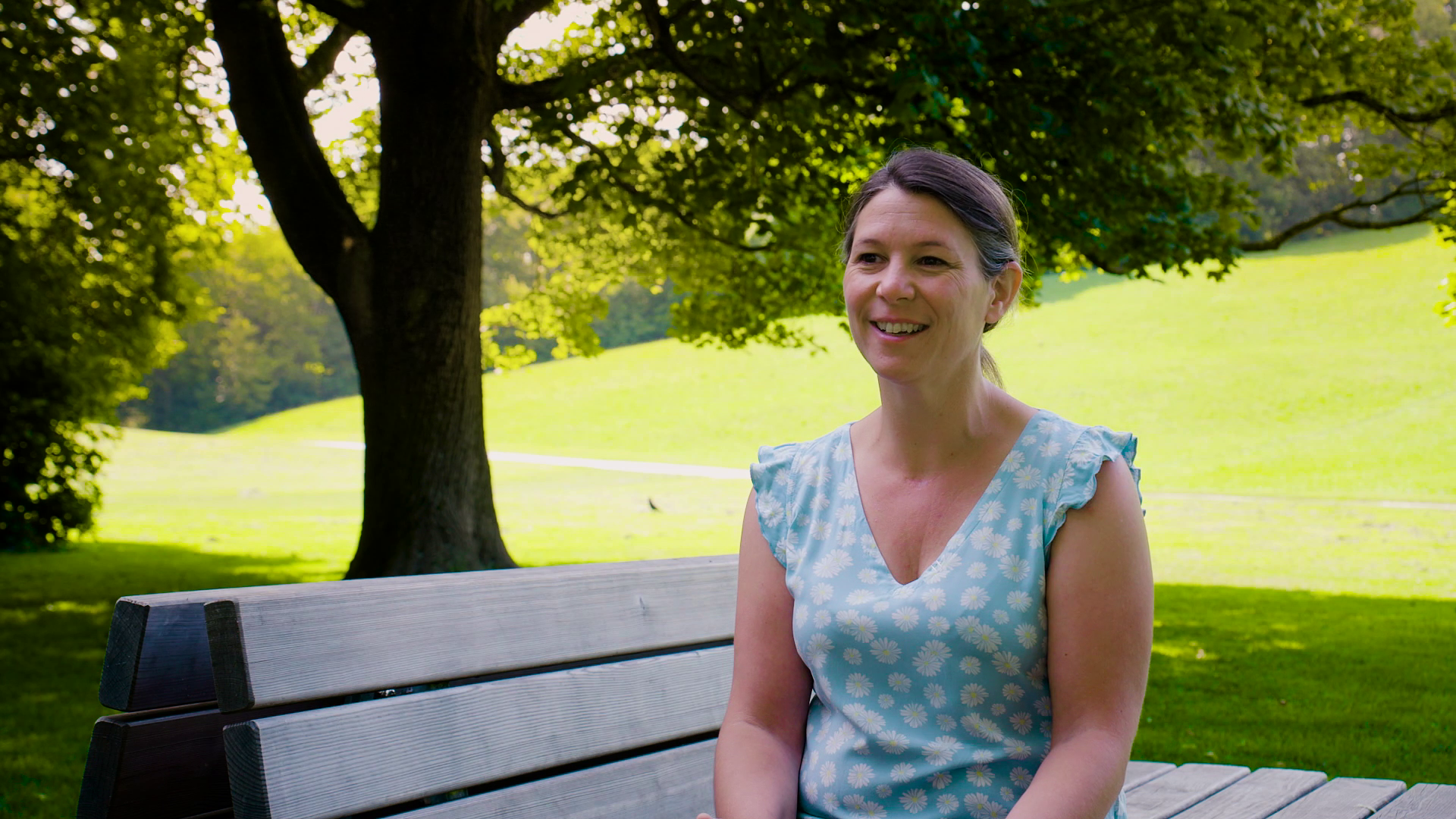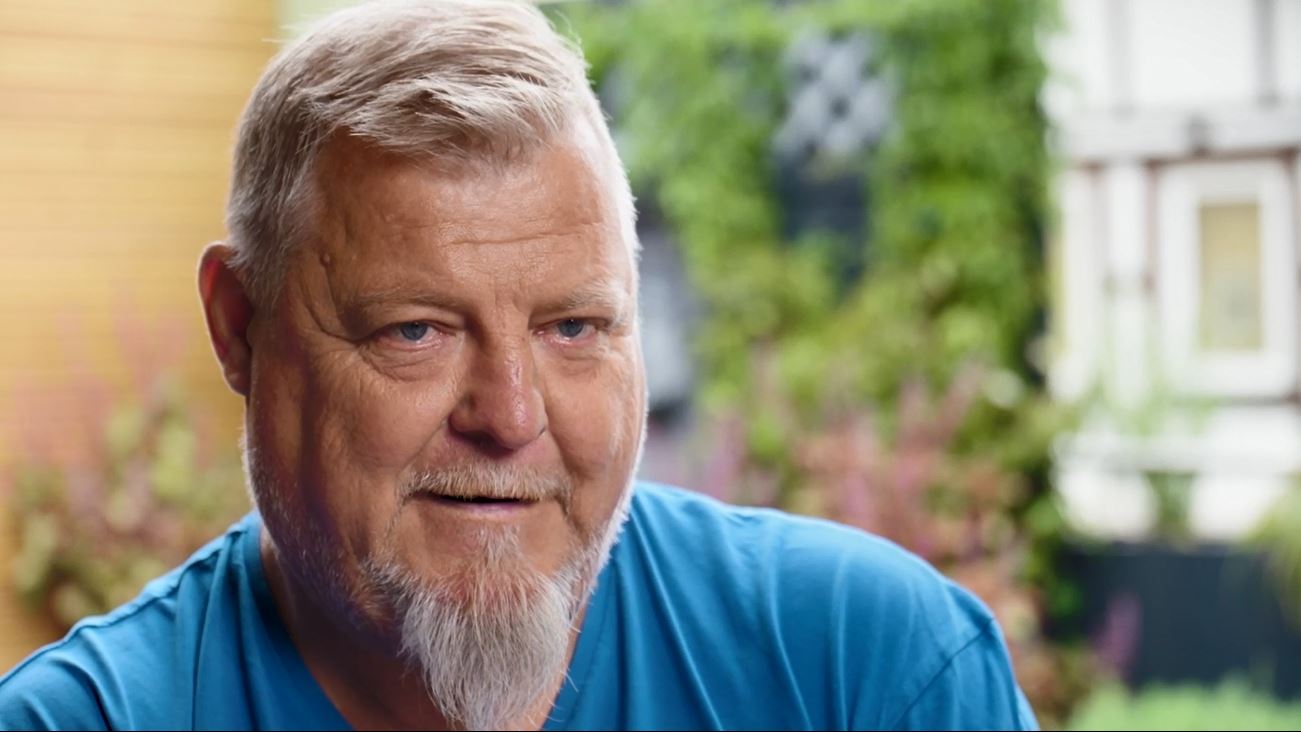My therapy options
Patient Stories – Making a Decision
Meet seven individuals in need of kidney replacement therapy who openly share about personal experiences with different therapy options. Hear the advantages and disadvantages from their point of view and learn about their individual reasons for transitioning from one therapy to another. Their stories serve to provide a glimpse into the different therapy options of peritoneal dialysis, hemodialysis whether in center or at home, and transplantation. Discover how these individuals have incorporated their therapy into their everyday lives.
- Teaser
- Teaser
- Teaser
- Teaser
- Teaser
- Teaser
- Teaser
Choosing the right therapy for you
Choosing the right therapy for kidney failure may be difficult. Become familiar with the therapy options and, together with your physician, choose the therapy that best suits your health status and lifestyle.
The dialysis therapy you chose, is not set in stone. Your personal lifestyle and changing medical factors also play a role in your choice of therapy. Those factors may change during your life or there might be complications which require switching to another form of treatment. Many patients do not undergo just one form of treatment in their lifetimes.
Each therapy option has its own advantages and disadvantages and not every therapy is suitable for every patient, which may limit your choices. Together with your physician and your family, you can decide which therapy is best for you in terms of treatment results and your individual quality of life.
- <h3><span class="text-deep-blue">Automatisierte Peritonealdialyse (APD)</span></h3>
- <h3><span class="text-deep-blue">Automatisierte Peritonealdialyse (APD)</span></h3>
- <h3><span class="text-deep-blue">Automatisierte Peritonealdialyse (APD)</span></h3>
- <h3><span class="text-deep-blue">Automatisierte Peritonealdialyse (APD)</span></h3>
- <h3><span class="text-deep-blue">In-center HD</span></h3>
- <h3><span class="text-deep-blue">Automatisierte Peritonealdialyse (APD)</span></h3>
How does a kidney transplant work?
The donor kidney is inserted into the lower parts of the abdomen. The diseased kidneys are usually not removed, mainly to benefit from the remaining functions of the kidney. If all goes well (i.e., the surgery is successful and appropriate medication to keep the kidney within the body is taken), the new kidney takes over the tasks of the diseased kidneys enough to partially restore the lost kidney function. A successfully transplanted kidney can work for many years. If the transplant is not successful, dialysis is still an option. Many patients with kidney disease go through different treatment modalities during their lifetime (e.g., start with peritoneal dialysis, then a kidney transplant, then switch to hemodialysis after the donor kidney may lose function or complications occur), so a failed transplant is not the last option.
What needs to be considered for a kidney transplant?
A successful transplant can help to achieve a better state of health without dialysis. To prevent rejection of the donor kidney, the patient (recipient) must take regular medications during and/or after the transplant. This medication is generally referred to as immunosuppresives. However, in some cases, even these medications cannot prevent the rejection of the kidney.
Since your immune system will be weaker compared to others, you should be aware of the potential side effects related to these medications, especially infections. Therefore, it is essential to follow the hygiene measures addressed by your physician. These medications can also cause other unwanted side effects, such as changes in your gums, increased blood pressure, high cholesterol levels, puffy face, anemia, unwanted hair growth, skin problems, and weakened bones. If any of these are present, inform your physician. For patients with a donor kidney, it is important that the anti-rejection and other medication is taken daily and that regular follow-up examinations take place.
Peritoneal dialysis (PD)
Peritoneal dialysis (PD) is named after the peritoneum. This is a thin, velvety tissue that lines the abdominal cavity and the internal organs. It is naturally present in every person’s body. This form of dialysis uses the peritoneum as a natural filter to replace kidney function. To do this, a fresh dialysis solution is introduced into the abdomen. Depending on your physician’s prescription, it remains there for a few hours and is replaced as soon as toxins and excess body water have been absorbed.
There are two types of PD
PD is performed either as continuous ambulatory peritoneal dialysis (CAPD) (manually) or as automated peritoneal dialysis (APD) (using a machine). In rare cases, a combination of two types can also be used. Both therapy options are normally performed independently at a patient's home or other suitable places, such as at work or at a hotel room during travel, generally by the patient or a caregiver. Don't worry! You will receive extensive training from your care team before performing dialysis on your own. All necessary steps will be communicated to you and afterwards you will be proud of yourself for being able to manage your therapy. The decision for one of the two PD options depends on the patient's lifestyle, health condition and personal preferences and is made together in consultation with your physician. You may find it helpful to involve relatives or other patients in your decision. Everything can be done together!
How to perform a bag exchange step-by-step
After applying hygiene measures, you connect the set of CAPD plastic bags filled with dialysis solution to your catheter. The CAPD set typically consists of two bags, one empty waste bag and one bag filled with 2-2.5 liters of cleansing fluid, or dialysate. You drain the used dialysis solution through your catheter, which takes about 20 minutes. After draining the used fluids flush the catheter with a small amount of fresh dialysate.
Now you can fill the fresh dialysis solution into your abdominal cavity. By hanging the plastic bag on the infusion pole at shoulder level, gravity pulls the fluid into your abdomen. This process is called filling and takes about 10 minutes. You can then disconnect the set and cap your catheter.
The whole process, which consists of the three steps filling, dwelling, and draining, is called a bag exchange. This process takes about 30 minutes and is typically done three to five times a day. Some patients prefer to do the bag exchanges before or after mealtime or at bedtime. All the necessary steps are taught and explained to you in advance in a detailed training session.
The dialysate remains in your abdominal cavity for several hours. This is called dwelling. During this dwell time, which is the time between two exchanges, waste products and extra fluid are removed from your blood through the peritoneum into the dialysate, which is removed from the body at the next bag exchange.
Learn about peritoneal dialysis in the following video:
For mental health, additional benefits of frequent HHD have been described. A short time daily hemodialysis session has been shown to improve mental health and lead to fewer depression episodes.
Moreover, if you are working, the work situation may be improved as the dialysis time is shorter.
Lastly, sleeping disturbances and restlessness in your legs may be lessened.
All those benefits may have a big impact on a patient’s individual situation and wellbeing. As a result frequent HHD could be a treatment option. Please talk to your dialysis team if this may also be an option for you as well.
HHD is proposed as a preferable choice for patients who want to continue to work, stay as flexible as possible, and perform dialysis in a familiar environment.
Dialysis in a center
Treatments are taken place in a dialysis center. The medical staff will prepare, perform an monitor.
If you choose in-center dialysis, you usually have three fixed appointments per week, typically for a four hour treatment in your dialysis center. With this treatment option, in general the dialysis team will prepare, carry out and monitor the dialysis for you.
Learn about hemodialysis in the following video:
Conservative care
Focus on sustaining the quality of life, not extending life. Therapy is based on relief from discomfort ant the pain of kidney failure symptoms, such as swelling and shortness of breath.
Depending on your (medical) conditions, dialysis might not prolong your life and the best option might be to let nature take its course. Regardless of medical conditions, based on individual situations and preferences some patients decide not to start or also discontinue renal replacement therapy.
You have the option of not receiving renal replacement treatment and life-prolonging treatment at all. The kidney function will then not be replaced, and your kidneys will fail, resulting in natural death. Your health care team will still support you and treat your symptoms with medication and, if necessary, give supportive form of nutrition. Conservative care is more about maintaining quality of life.
Your health team will talk with you to help you make an informed and considered decision.
Make a choice
Keeping and going to your appointments and following your treatment plan is critical to your health. Therefore, it is important to choose a therapy that suits to your personal situation. Always remember: The return for the time you invest can be a fuller, more active, and healthier life.
You have now learned an overview of, what treatment options are available. Together with your medical team, you can discuss and decide which of those treatment options would be the most suitable for you.
Read more about making the right decision in the next section.
Related content
1 Mucsi I, Hercz G, Uldall R, Ouwendyk M, Francoeur R, Pierratos A. Control of serum phosphate without any phosphate binders in patients treated with nocturnal hemodialysis. Kidney Int. 1998;53(5):1399-1404. doi:10.1046/j.1523-1755.1998.00875.x
2 Culleton BF, Walsh M, Klarenbach SW, et al. Effect of frequent nocturnal hemodialysis vs conventional hemodialysis on left ventricular mass and quality of life: a randomized controlled trial. JAMA. 2007;298(11):1291-1299. doi:10.1001/jama.298.11.1291
3 Chan CT, Shen SX, Picton P, Floras J. Nocturnal home hemodialysis improved baroreflex effectiveness index of end-stagerenal disease patients. J Hypertens. 2008; 26(9):1795-1800. doi: 10.1097/HJH.0b013e328308b7c8
4 Marshall MR, Polkinghorne KR, Kerr PG, Hawley CM, Agar JW, McDonald SP. Intensive Hemodialysis and Mortality Risk in Australian and New Zealand Populations. Am J Kidney Dis. 2016;67(4):617-628. doi:10.1053/j.ajkd.2015.09.025
5 Rydell H, Ivarsson K, Almquist M, Segelmark M, Clyne N. Improved long-term survival with home hemodialysis compared with institutional hemodialysis and peritoneal dialysis: a matched cohort study. BMC Nephrol. 2019;20(1):52.
Published 2019 Feb 13. doi:10.1186/s12882-019-1245-x
6 Marshall MR, Walker RC, Polkinghorne KR, Lynn KL. Survival on home dialysis in New Zealand. PLoS One. 2014;9(5):e96847. Published 2014 May 7. doi:10.1371/ journal.pone.0096847

























